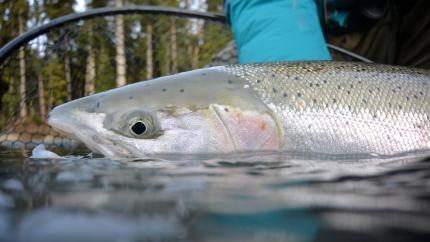
Steelhead, a sea-going rainbow trout that can exceed 30 pounds, is the Washington State Fish and an icon of the Pacific Northwest that has been a source of important cultural and economic benefits throughout the region’s history.
Though often overshadowed by their cousins, the Pacific salmon, steelhead are an indicator of ecosystem health and are important culturally to both recreational anglers and Indigenous people.
Washington and other western states have both winter-run and summer-run steelhead populations, depending on the river and habitat conditions. Unlike salmon, steelhead can survive spawning and return to spawn more than once. Steelhead spend a significant portion of their juvenile and adult life stages in freshwater, making them particularly susceptible to habitat degradation and other pressures.
While steelhead are sometimes known as a “fish of a thousand casts,” fishing for them does not require a boat or expensive gear, making it a relatively accessible fishery. Tips for steelhead fishing etiquette are available in this blog post.
-
Statewide Steelhead Management Plan
WDFW is committed to supporting steelhead recovery through robust steelhead management.
-
Coastal steelhead management
Learn more about what goes into coastal steelhead management and conservation.
-
Puget Sound steelhead management
Learn more about Puget Sound steelhead management and conservation.
-
Winter and summer steelhead smolt stocking
Hatchery steelhead smolts are released into river systems and typically return after one to two years at sea.
-
Salmon and steelhead co-management
We work closely with treaty tribes to support steelhead conservation as well as fisheries management.
-
Steelhead (Oncorhynchus mykiss)
Species information including description, status, range, and run-timing for anadromous rainbow trout.